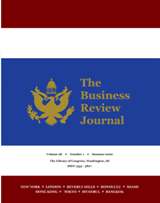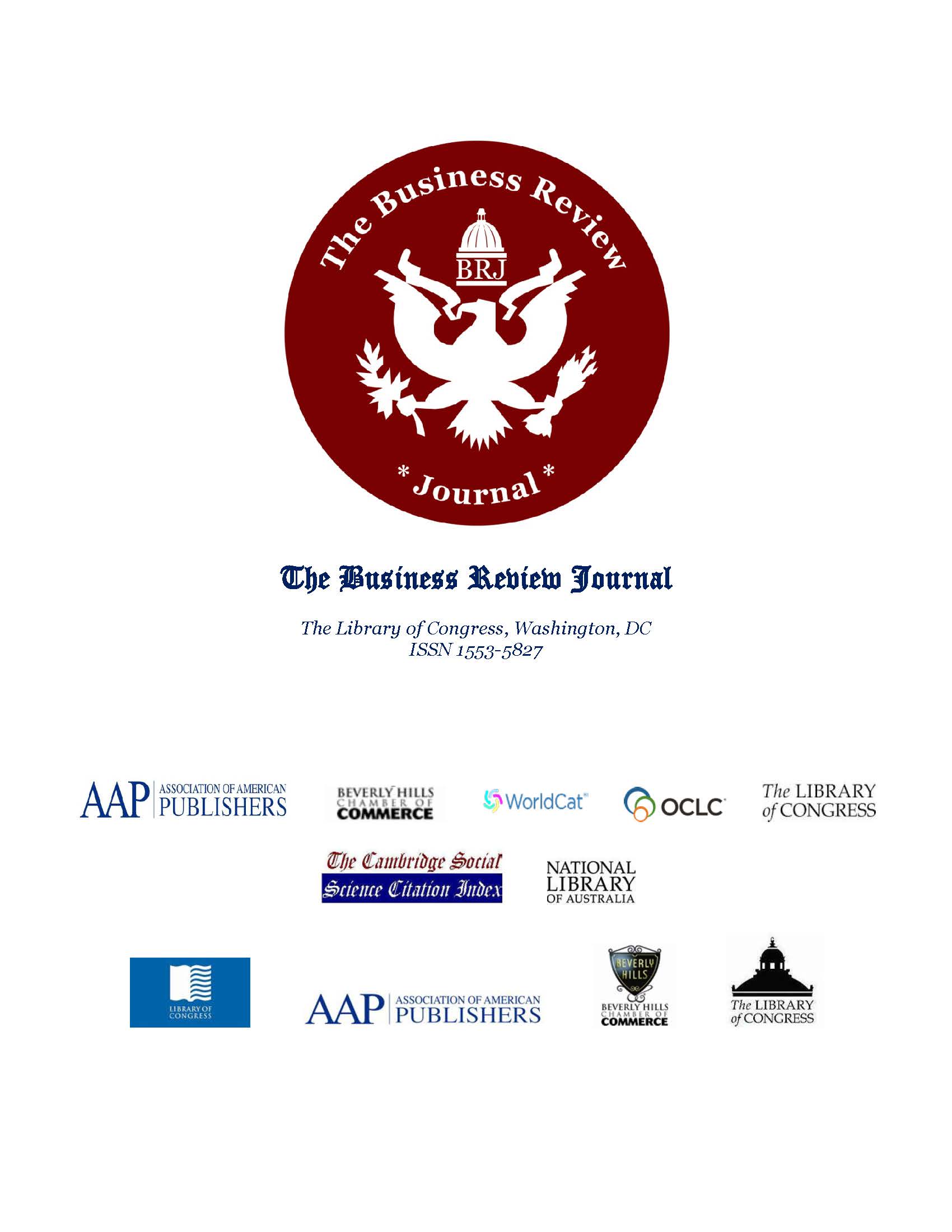|
Understanding Consumer
Perception and Behavior of Smartphone Application
Dr. Nasim Z. Hosein,
Northwood University, Midland, Michigan
ABSTRACT
Protecting individual’s
security threats is a multidimensional problem involving human and technological
factors. Although multiple security applications (apps) are offered by
third-party developers for free, only a small portion of smart device users have
adopted these apps. This study investigates how smartphone users’
security-related decisions are influenced by their attitudes, perceptions, and
understanding of various security threats. This research seeks to provide
quantified insights into smartphone users’ behavior toward multiple key personal
security features including calling a tow truck, calling for a secure ride,
identifying personal features and smartphone alarm services. This research also
provides evidence that making correct security decisions might not necessarily
relate with individuals’ awareness of the significances of security threats. On
the basis of our findings and the results presented in the paper are the factors
that might influence smartphone users’ security behaviors as well as what they
perceive to be needed security features. Cell phones have improved the
communication among people over the past decade. The number of cell phone users
is increasing dramatically which is also expected to continue increasing in the
future. Smartphones don’t just contain e-mail functionality rather they are
powerful computers that can handle multiple functions. With broad and rapid
acceptance, smart devices such as smartphones and tablet computers are playing
an increasingly important role in the user's daily life. A potential information
and personal security issues have received some but not a great deal of
attention from practitioners and academics. This research outlines the market
research for a security application Last Call, the methodology, descriptive
analysis, data analysis of hypothesis testing, limitations, and a detailed
conclusion. The approach that was taken for our survey was simple random
sampling for individuals with smartphones. The data was collected over a period
of four weeks from October and November 2017. The sample portion of who was
observed was chosen at random ranging from young adults to older adults, both
students and nonstudents, parents and individuals with businesses. The surveys
were distributed throughout several locations consisting of but not limited to
towns and cities in and around Northern Michigan.
Full text
*
The Impact of Auditor
Tenure on Audit Quality, Audit Fees, and Non-audit fees:
Is Auditor Loyalty
Paying Off After SOX?
Dr. David Adu-Boateng,
Purdue University Global, Fort Lauderdale, FL
ABSTRACT
This paper examines the
impact of audit firm tenure on audit quality, audit fees, and non-audit fees.
The length of time an audit firm spends to audit a public company is significant
in predicting the quality of audit work and the benefits that accrue to the
client from advisory and oversight work by the external auditor. Generally,
auditors need sufficient time to be familiar with their clients’ businesses,
which is needed to enhance effective controls, streamline operations, ensure
quality financial reporting, and reward the audit client’s loyalty with reduced
cost of assignments. However, researchers debate over the need to rotate audit
firms in order to improve auditor independence. Others argue that long tenure
may diminish auditor independence, and in turn reduce audit quality. This study
employs a multivariate regression to analyze 7,701 public companies, and finds
that public firms stand to benefit from long audit firm tenure. The results
indicate a positive association between audit firm tenure and the disclosure of
material internal control weaknesses. The unexpected association indicates that
auditors may be useful in maintaining effective internal controls (reduced
disclosure) and also in discovering and reporting material control weaknesses
(increased disclosure). Further, increased familiarity with the client’s
business coupled with the client’s loyalty play a significant role in reducing
audit and non-audit fees over time. This study explores the impact of audit
firm tenure on audit quality, audit fees, and non-audit fees. An audit firm’s
knowledge of a client’s business operations, acquired over time, is expected to
lead to quality audits and improved financial reporting. Audit firm clients
retain auditors for various reasons, including the benefits of quality audits (Blay,
Geiger, & North, 2011). A client builds a relationship with the audit firm and
expects to reap benefits from the long-term relationship. There is evidence that
long audit tenure contributes to a decrease in the disclosure of internal
control weaknesses by the audit client (Arel, Brody, & Pany, 2005; Beasley,
1996). Further, audit firms expect to reduce their audit costs as they stay
longer with a client and gain comprehensive knowledge of the client’s business
and the business environment. The net effect is increased audit efficiency and
effectiveness. The concept of quasi rent supports this view. The auditor expects
to reap benefits (quasi rent) from the invested efforts over time. Therefore,
it is expected that firms will benefit from retaining auditors and improve audit
quality (Geiger & Raghunandan, 2002). This paper uses the Disclosure of Internal
Control Weaknesses as a proxy for audit quality (Luo & Thorton, 2013). For
instance, an audit firm with sufficient knowledge of the client’s business is in
a better position to assist the client in establishing sound internal controls
over financial reporting (Bonner, 1994).
Full text
*
Analysis of Regional
Composition of Tourism Cluster in Portugal
Antonia Tavares do Canto,
University of the Azores, Portugal
Dr. Joao Pedro Couto,
University of the Azores,
Portugal
ABSTRACT
Tourism is an expanding
economic activity both globally and particularly in Portugal. In this work, we
examine differences in tourism development among Portuguese regions. The results
indicate that different levels of development exist in terms of the importance
of tourism to the local economy, the dynamics and evolution of tourism, the
efficiency levels of business activities, and the sustainability of tourism
development. This article contributes to the existing literature by proposing
and testing a framework to analyze the tourism cluster in Portugal in
terms of importance, dynamics, efficiency, and sustainability. Considering the
benefits of clusters, numerous companies in Europe, including in Portugal, have
created plans for increasing cooperation to develop and enhance their
competences (Santos, 2007). Because of globalization and inherent
competitiveness, the intention of these institutions is to internationalize
their products and services. For this purpose, it is necessary for organizations
to replace traditional economic growth models in the form of clusters to enable
the development of scale and promote innovation (Costa, 2005). Although Portugal
is considered an excellent tourist destination owing to its mild climate,
cultural and gastronomic diversity, competent services, and skilled labor, the
development of collaborative strategies is fundamental to increasing
competitiveness, and studies on clusters are scarce (Estevão & Ferreira, 2012).
Thus, the purpose of this study is to evaluate the importance, dynamics,
efficiency, and sustainability of the tourism cluster in Portugal. In light of
the significance of the tourism sector in the national economy, the goal is to
test four hypotheses. The first hypothesis analyzes the relative importance of
tourism in different regions in Portugal; the second hypothesis investigates the
differences in terms of the dynamics and evolution of tourism in these regions;
the third hypothesis evaluates whether the performance of the tourism cluster is
similar in different regions; and finally, the fourth hypothesis analyzes the
sustainability of Portuguese tourism development. A cluster analysis was used to
classify the regions in terms of the dimensions studied to assess the
importance, dynamics, efficiency, and sustainability of the tourism cluster.
The present study is divided into five sections. The first section presents a
literature review of the cluster concept and the tourism cluster, with a focus
on the Portuguese context. The second section presents the analysis model and
the hypotheses to be tested. In the third section, the procedures, techniques,
and variables used to evaluate the hypotheses are described. The fourth section
describes the results. In the fifth section, theoretical contributions,
practical implications, and limitations and recommendations for future
investigations are presented. The notion of
clustering has evolved. To better frame this design, understanding how
clustering should be implemented is important.
Full text
*
The Influence of
Accessibility and Attractiveness Factors on the Development of the Azores
Tourism Cluster
Antonia Canto, School of
Business and Economics, University of the Azores, Portugal
Dr. Joao Couto, School of
Business and Economics, University of the Azores, Portugal
ABSTRACT
Tourism is a growing
activity around the world and has been discussed in a number of studies in
different areas, including economics and management. Due to its growing
importance in Portugal, particularly in the Azores, it has become a subject of
interest for regional development. This study analyzes the configuration of the
cluster of tourism in the Azores and determines the influence of accessibility
and attractiveness on its development. For this purpose, we grouped the Azores
islands according to their importance, dynamics, and efficiency of tourism
cluster, and tested the influence of the accessibility and attractiveness
factors. The results show that accessibility influences the dynamics of the
tourism cluster, namely, the existence of direct links to the United States of
America, but it also influences the number of inter-island air connections and
the availability of maritime transportation for tourists. Attractiveness
influences the efficiency of the tourism cluster, namely, occupancy rate and
revenue per available room (RevPAR). This study contributes to a better
understanding of the factors that affect the development of the tourism cluster
in the Azores and their influence on the different islands. The tourism cluster
comprises the competitiveness and economic progress
of a certain geographical region, along with the
social and cultural dynamics, and the quality of life of tourists and
inhabitants (Cunha & Cunha, 2005). This translates into a cluster of companies
and institutions, correlated with each other by the tourist product (Martins,
Fiates & Pinto 2016). Some of the benefits associated with tourism clusters are
more efficient and effective organization of tours as transport costs are
minimized and the possibility of sharing infrastructure and advertising
campaigns. Therefore, these clusters allow cooperation between enterprises in
order to obtain a differentiated tourist product. Over the past few decades,
tourism has become an important economic activity, as the impact of its direct,
indirect, and induced effects have been significant (Truong
& Shimizu, 2017). This sector drives the development and economic growth of
the entire country, since it makes a positive contribution to production,
employment, and the balance of services. To better understand the relationship
between agents in the tourism sector and their organization, the purpose of this
study is to evaluate the importance, the dynamics, and the efficiency of the
tourism cluster in the Azores. The first hypothesis determines the importance of
tourism within the islands of the Azores, while the second examines the dynamics
of the tourism cluster, the third hypothesis tests the efficiency of the Azorean
tourism cluster in the nine islands of the Azores, and the fourth hypothesis
determines if the composition of the tourist cluster is influenced by
attractiveness and accessibility factors. A quantitative methodology was
applied to assess the importance, the dynamics, and the efficiency of the
tourism cluster in the Azores. The technique used was cluster analysis, in
particular, the k-means cluster methodology.
Full text
*
|

 The Business Review
Journal
The Business Review
Journal
.gif)